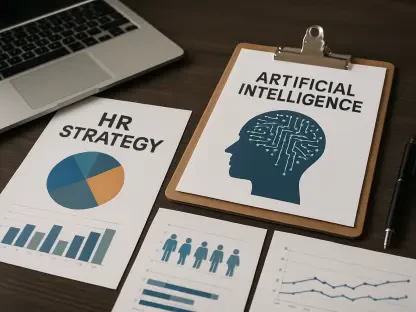In the relentless march of progress, investing in your employees’ professional growth is not just a “nice-to-have” perk but a strategic imperative. As industries transform and skill requirements shift, organizations must prioritize employee development plans to stay ahead of the curve. Now, the question that arises here is, how are you going to facilitate such a plan? Well, we’re here to help. This article aims to provide you with the necessary steps required to kickstart an appropriate employee development plan.
What Is an Employee Development Plan?
An employee development plan is a structured program designed to help employees build new skills and enhance existing capabilities. This program aims to help employees grow within their current roles or prepare for future opportunities in the organization. It serves as a roadmap that aligns employees’ professional development goals with the company’s overarching objectives and workforce needs.At its core, an employee development plan is a collaborative process between the employee and their manager. It involves:– Identifying current skills and areas for improvement– Outlining a personalized plan with actionable steps and timelines– Providing access to relevant training, experiences, or educational resources– Continuously evaluating progress and adjusting the plan as neededWe are going to discuss these points in detail. But first, let’s have a look at the types of employee development plans.
Types of Employee Development Plans
Employee development plans can take several forms depending on the specific goals, roles, and circumstances involved. Here are some common types:
Performance-Based Plans
These plans focus on improving an employee’s performance in their current role. They identify areas where additional training or coaching is needed, set measurable targets, and provide strategies to enhance job-related skills and productivity.
Career Progression Plans
Career progression plans are designed to prepare employees for future roles or promotions within their current career path. This may involve developing managerial skills, acquiring advanced technical certifications, or broadening their cross-functional exposure. A survey conducted by Gartner involving over 3,300 employees uncovered that less than one-third of the workforce has a clear understanding of how to progress their careers in the coming five years.
Job Rotation and Cross-Training Plans
These employee development initiatives temporarily move individuals across different roles, departments, or job functions. This approach expands their knowledge base, versatility, and allows them to explore new interests.
Leadership Development Plans
As the name suggests, these plans concentrate on cultivating leadership capabilities for employees who demonstrate high potential for management or executive roles. Activities may include mentorships, leadership training programs, and stretch assignments.
Professional Development Plans
Some employees may aspire to grow in ways that diverge from their current career trajectory. Professional development plans support employees who want to master new skillsets, earn additional credentials, or transition into different fields.The implementation of the above-mentioned development plans depends on factors like the:– Organization’s objectives,– The individual’s career aspirations, and– Any competency gaps that need to be addressed.Regardless of the plan type, they are most effective when personalized and driven by the employee’s interests and ambitions. These plans also come with their own benefits. Let’s explore what they are.
Components of an Effective Employee Development Plan
SMART Goals
Goals set within the development plan should be SMART: Specific, Measurable, Achievable, Relevant, and Time-bound. Specific goals clarify exactly what skills need to be developed. Measurable goals allow for tracking clear progress. Achievable ensures the goals are realistic. Relevant ties the goals to the employee’s current role and future aspirations. Time-bound sets a target timeline for accomplishing the goals.
Variety of Learning Activities
An effective plan should incorporate a diverse mix of learning activities to engage different proficiencies and learning styles. This can include:– Formal training programs,– Mentorships from senior employees,– Job shadowing opportunities,– Special project assignments to apply new skills, and– Access to online courses, certifications, or conferences.
Milestones
We already know that the plan should map out a clear timeline. But that’s not enough. The timeline should be accompanied by specific milestones or benchmarks to be achieved. Setting deadlines for completing development activities and interim targets helps maintain momentum and accountability. Regularly reviewing progress against defined milestones allows for adjusting the plan if needed.
5 Steps to Create an Employee Development Plan
Identify Development Areas
The initial step in crafting an employee development strategy is to accurately pinpoint the areas where development is needed. This involves thoroughly assessing the employee’s current skills against the backdrop of their role’s requirements and the organization’s future needs. To identify skill gaps and areas where the employee wishes to advance, you may utilize:– Performance reviews,– Skill assessments, and– Direct conversations.This dual focus on skill gaps and career aspirations ensures the plan is beneficial for the employee’s growth and aligns with organizational objectives.
Set Goals After Discussing with Your Employees
Once development areas are identified, the next step is to establish clear, specific goals. This goal-setting process should be collaborative, involving both the employee and their manager or HR representative. We have already discussed how goals should be SMART: Specific, Measurable, Achievable, Relevant, and Time-bound. These goals could range from acquiring new technical skills to developing soft skills such as leadership or communication. The key is ensuring these objectives are mutually agreed upon, clearly defined, and directly tied to both the employee’s career progression and the organization’s success.
Determine Learning Activities
With goals set, identify the most effective learning activities to achieve them. This could include a mix of:– On-the-job training,– Formal courses,– Workshops,– Seminars,– Mentoring, or– Shadowing opportunities.You should also consider the learning style of the employee and the resources available within and outside the organization. Each learning activity should directly contribute to achieving the set goals, offering practical and experiential learning to close the identified skill gaps or advance the employee’s knowledge.
Document the Plan & Set Timeline
An essential step is to document the plan, outlining the identified goals, chosen learning activities, and a timeline for achievement. This documentation serves as a roadmap for the employee’s development journey and a reference point for both the employee and the organization. Ensure the timeline is realistic and provides enough flexibility for adjustments. It should include milestones and checkpoints to monitor progress and keep the employee motivated and on track.
Regularly Review and Adjust
The development process is dynamic, and the staff development plan should be flexible enough to adapt to changes. Regular reviews of the plan are crucial to assess progress, celebrate achievements, and make necessary adjustments. These reviews can help identify new development areas as the employee grows or as organizational needs evolve. Feedback during these sessions should be constructive, aimed at further enhancing the employee’s development and ensuring the plan remains aligned with their aspirations and the company’s goals.
Benefits of an Employee Development Plan
Investing time and resources into structured employee development plans can yield substantial rewards for both individuals and organizations. Here are some key benefits:
Closing Skills Gaps
As industries evolve and new technologies emerge, employee development plans help organizations identify and address skills gaps within their workforce. By upskilling and reskilling employees, companies can ensure they have the right capabilities to remain competitive.
Improving Employee Engagement
Investing in employee development can directly correlate with increased employee engagement and employee motivation. This investment in employee growth leads to a more committed and satisfied workforce, contributing to higher levels of employee productivity and overall company performance. According to Gallup’s findings, only 36% of employees in the United States feel engaged in their workplace.
Increasing Employee Retention
Employees, especially top talent, are likelier to stay with an employer that invests in their professional growth. Development plans demonstrate the company’s commitment to employees, increasing job satisfaction and retention rates. The Pew Research Center reports that 63% of employees who left their positions mentioned the lack of advancement opportunities as a contributing factor to their decision to quit.
Enabling Seamless Succession Planning
Employee development initiatives enable succession planning by preparing high-potential employees to seamlessly transition into critical roles when they become vacant. This ensures business continuity and knowledge transfer across roles.
Aligning Employees with Organizational Goals
Through structured development plans, employees’ personal career goals are aligned with the strategic objectives of the organization. This alignment ensures that both the employees and the company are working towards common goals, leading to mutual growth and success.
Employee Development Plan Template
This template serves as a structured guide to developing a comprehensive employee development strategy that supports both employee growth and organizational objectives. Feel free to take inspiration from it and draft your own employee development plan.
Employee Development Plan Examples
Here are two examples across different roles and scenarios that illustrate how employee development plans come together:#### Example 1: Succession Planning for a Manager Role**Current Role:** Senior Marketing Coordinator **Long-Term Goal:** Become a Marketing Manager within 2 years **Development Areas:** – Leadership and people management skills– Strategic planning and budgeting– In-depth analytics and reporting**Learning Activities:** – Enroll in a management training program– Monthly mentorship with current marketing manager– Lead cross-functional project teams– Take online courses in data analysis and reporting tools**SMART Goal:** Earn marketing management certification within 18 months **Timeline:** Quarterly review meetings to assess progress#### Example 2: Upskilling for a Career Change**Current Role:** Financial Analyst **Long-Term Goal:** Transition to a Data Scientist role **Development Areas:** – Statistical modeling and machine learning– Programming languages like Python– Data visualization and storytelling**Learning Activities:** – Pursue data science certification from an accredited online program– Attend industry conferences and network with data scientists– Work on analytics side projects to build portfolio– Participate in a job shadowing program**SMART Goal:** Build, deploy, and present a machine-learning model within 1 year **Timeline:** Bi-monthly check-ins, complete certification by 10 months
Summing It Up!
Providing your employees with the right career development opportunities will establish a good work culture. This will gain you a good competitive advantage over your competitors. Moreover, it will also improve your branding in the marketplace. So, it is essential to carefully curate the plan and improvise it with time.









